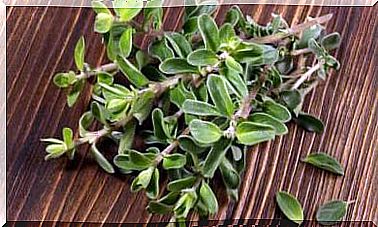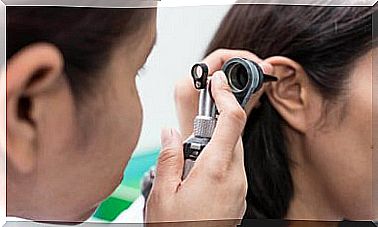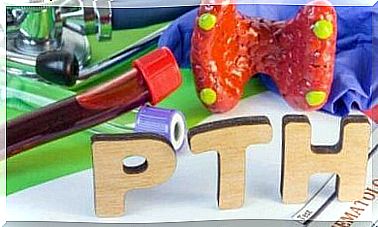Tailor’s Muscle – The Longest In The Human Body
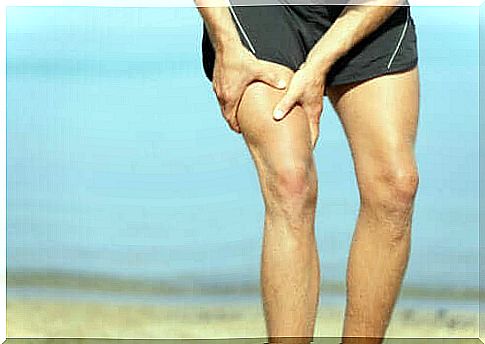
The tailor’s muscle is one of the muscles in the thigh. Although many people do not know about it, it is the longest building block in the human body. Some people often think it’s a femur, but the truth is that the sartorius is longer.
One of its main functions is bending. Its arrangement allows you to perform certain positions, such as crossing your legs when you sit down. The problem is that, like any other muscle, a tailor’s muscle is also injured. It can seriously affect any mobility of the lower limbs.
What is a tailor’s muscle?
The tailor’s muscle ( musculus sartorius) , as we have already noted, is one of the main components of the thigh. In particular, it begins at the top and front of the iliac spine. From there it goes diagonally to the top of the tibia.
In the tibia, it is hooked in its innermost and upper part. Thus it creates a kind of curvature along the thigh, following the medial condyle of the femur to the point of attachment. This last section is actually a tendon.
The tailor’s muscle forms a tendon structure called a goose foot. It is made up of the distal tendons of the semitendinus muscle, the slender internal muscle and the lateral muscle. This is an area prone to very limiting injuries.
In some people, there may be deviations from the normal position of the tailor’s muscle. This is reported in a study published in the Chilean Journal of Anatomy. This should be taken into account, especially when having operations or procedures.
The tailor’s muscle is the longest in the human body. Moving from the pelvis to the knee and creating a certain curvature, it usually measures about 55 centimeters in an adult of average height. In some people, it can reach up to 60 centimeters.
The innervation of the muscle is provided by the femoral nerve. In addition, the femoral artery passes through it, which is responsible for transporting oxygenated blood to the most distal parts of the leg.
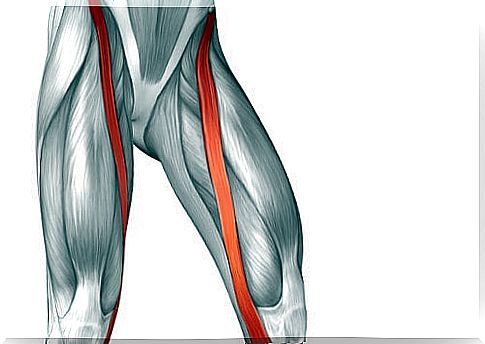
What are the functions of the tailor’s muscle?
As the Royal Spanish Academy explains, the word “sartorio” comes from the Latin sartor, which means “tailor”. The name of this muscle is not accidental. It is due to the fact that one of its functions is to allow the legs to be crossed, which is a typical attitude used by ancient tailors.
The tailor’s muscle is a skeletal muscle of the striated type. This means that it contracts consciously, unlike smooth muscle. The latter, for example, are part of the digestive system and contract unconsciously.
Its main function is to bend the leg. If we visualize its arrangement, it is easier to understand. When it contracts, it pulls the lower leg towards the hip. It also allows for other movements, such as turning the hip outward or bending the knees.
Likewise, it is involved in the internal rotation of the leg or its lifting.
Why does a tailor’s muscle hurt? – main causes
Pain in a tailor’s muscle, like any other muscle group, usually results from an injury or overexertion. In addition, other symptoms such as swelling, redness, or increased sensitivity may appear.
Traumatic injuries are those caused by a direct hit to an area of the muscles. Any blow to the iliac spine or the middle or inner thigh can cause this pain. The same thing happens if an injury occurs in a goose foot.
When an injury affects a goose foot, it can obstruct other movements, damaging nearby muscles. The truth is that more often than the same muscle injury tailor, there are injuries associated with tendinitis or bursitis in the area just goose feet.
Tendinitis and goose foot bursitis
Goosefoot tendinitis is the inflammation of certain tendons in that area. It can cause lameness, pain on the inside and even inability to move the leg if the pain is severe.
On the other hand, we have bursitis. It is a fluid-filled cavity similar to the synovium of other joints. It allows you to absorb friction between bones and tendons to reduce damage caused during movement.
Both injuries are classic sports injuries. Especially in runners or those who do exercises that put a lot of strain on this area of the knees.
Injuries caused by overexertion or lack of training
Excessive effort is when you train too much or put too much force on your muscles. In such cases, some fibers may break. In fact, such a strain can also be related to a lack of training.
Why does the tailor’s muscle still hurt?
While this is rare, pain in the tailor’s muscle can also occur due to the presence of calcification. This is explained in a study published in Semergen-Family Medicine . This type of calcification, in turn, comes from a previous injury.
How can a tailor’s muscle be strengthened?
Strengthening the tailor’s muscle is necessary for many reasons. First of all, because strength training has many health benefits, not only aesthetic. For example, it speeds up your metabolism and helps you burn more calories at rest.
In addition, the leg muscles support the entire body weight. They allow us to walk and move naturally. In the case of the tailor’s muscle, it is responsible for bending the leg and making rotational movements. These are the basic movements for crouching.
Therefore, in healthy people, it is recommended to do lower body strength training. Whether you are at the gym or at home, there are many exercises you can do to strengthen this muscle. One of them may be squats.
Stretching is another basic exercise. In the case of a tailor’s muscle, in order to stretch it, the leg should be placed in the opposite direction to its position. To do this, you need to lie on your side on a safe surface. The thigh should be straightened and the hips turned inwards.

Discomfort in any muscle should be checked by a doctor
Keep in mind that if there is any discomfort in a tailor’s muscle, as with any other muscle, consult a specialist. If we let the pain or discomfort pass, we can lead to the development of a disease such as tendinitis.
By placing a small plastic roller under the thigh, we can eliminate the tension. These types of items are also sold in many sports stores. The idea is to lie down on a roller or roller and then roll over while pressing down on your thigh.
This type of self-massage can be used independently at home at any time.
Finally, it is worth emphasizing once again that we should often strengthen as well as stretch the tailor’s muscle. In this way, we avoid possible injuries that arise as a result of strain or lack of training.



